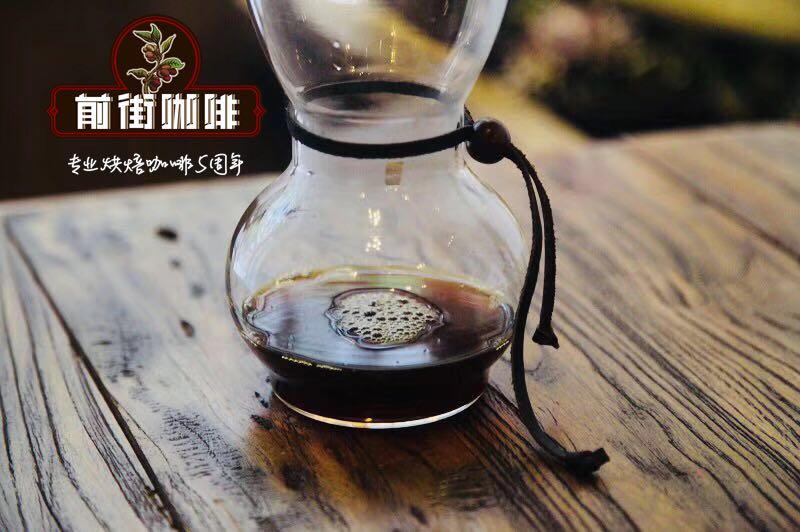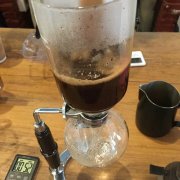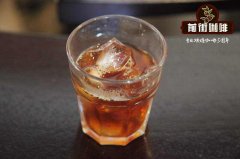Introduction to the flavor characteristics of red bourbon washed Rwandan coffee in Karen Gracia treatment plant, Rwanda

Professional coffee knowledge exchange more coffee bean information please follow the coffee workshop (Wechat official account cafe_style)
Red bourbon washing at Karen Gracia treatment Plant, Rwanda
Rwanda "Karengera Cyiya Washing Station" Red Bourbon Washed
Kirimbi in the Nyamasheke region of the western province of Rwanda
The farmers harvest from about 661 small farmers in the area.
100% Red Bourbon red bourbon variety
The method of picking by hand
Refined square complete washing treatment
Drying of high scaffolding with dry square frame
The elevation is 1600 MULT2000 meters.
The palate is sucrose, with floral aromas and bright acidity like black cherries.
And berry flavors similar to blackcurrants.
The Karen Gela-West Asia processing plant is located in the green hills in southwestern Rwanda not far from the south bank of Lake Kivu.
It was founded in 2006, although the processing plant is at an altitude of 1800 meters, but the harvest of coffee even reached as high as 2000 Michael degrees.
The coffee cherries selected by the West Asian processing plant are harvested from about 661 small farmers in the area. The yields of these small farmers are small-usually less than one-fourth of a hectare.
They pick ripe coffee cherries by hand, usually in baskets above their heads, and occasionally transport them to the cleaning station by bike or truck.
The West Asia processing Farm is led by Jonathan Zindana, who is an agronomist and one of the most experienced managers in Rwanda.
During the harvest season, the processing plant employs about 100 people, usually from March to July.
Once the coffee cherries are delivered to the West Asian processing plant, they will be carefully sorted by hand to ensure that only red cherries are accepted.
Then, they will choose to scrape the pulp on the same day-mostly at night-and use a mechanical pulper that divides the beans into three grades.
After removing the pulp, the coffee will ferment overnight (about 12 hours), and then use the flotation channel weight to re-screen the coffee and re-classify it (the heaviest is considered the best).
Then soak the coffee beans for another 24 hours, and then select them by hand in the drying process.
This last task is accomplished by experienced women and is the most important quality control.
The selected coffee beans are moved to a high scaffolding-the African bed.
In the sun, they repeatedly open and sort the coffee to ensure it dries evenly and removes any damaged or defective coffee beans.
And store them in a shell until they are ready for export.
From the beginning of the cherry harvest, the coffee will be equipped with a paper card recording the harvest date and grade (A1, A2, etc.).
For example, if a batch of coffee is recorded as "area 106 Universe 04-A1 coffee 39th, this means that it was the first batch to be processed on April 4 and rated A1.
This simple and effective approach is an important tool for controlling quality and ensuring the traceability of batches.
Every season, the treatment plant will donate the excess pulp of the coffee to the surrounding farmers as fertilizer, and establish wastewater treatment using IM technology.
They have recently launched training for these projects to achieve best agricultural practices. This treatment plant is certified by the Rainforest Alliance.
Important Notice :
前街咖啡 FrontStreet Coffee has moved to new addredd:
FrontStreet Coffee Address: 315,Donghua East Road,GuangZhou
Tel:020 38364473
- Prev

Introduction to the Historical Story of Clersdale Manor in St. Andrew's Parish, Blue Mountain Coffee, Jamaica
Professional coffee knowledge exchange more information about coffee beans please follow the coffee workshop (Wechat official account cafe_style) the Blue Mountains of Jamaica is the most famous coffee in the world. Our Blue Mountain Coffee is from Wallenford Manor, certified by the Jamaican Government Coffee Bureau, and all are Grade 1 authentic Arabica beans. The plantation area is rich in volcanic soil and has the best climate strip.
- Next

Resource, Sherwood Forest, Whitfield, R.S.W Coffee Manor, Blue Mountain, Jamaica
Professional coffee knowledge exchange more coffee bean information please follow the coffee workshop (Wechat official account cafe_style) before talking about this bean, let's talk about Blue Mountain Coffee. Many people go to coffee shops. The coffee they often order is Blue Mountain, Blue Mountain. In fact, this cup of coffee is not Blue Mountain at all (pronounced in Taiwanese), so is it really Blue Mountain or is it actually very Blue Mountain (Taiwanese)?
Related
- Detailed explanation of Jadeite planting Land in Panamanian Jadeite Manor introduction to the grading system of Jadeite competitive bidding, Red bid, Green bid and Rose Summer
- Story of Coffee planting in Brenka region of Costa Rica Stonehenge Manor anaerobic heavy honey treatment of flavor mouth
- What's on the barrel of Blue Mountain Coffee beans?
- Can American coffee also pull flowers? How to use hot American style to pull out a good-looking pattern?
- Can you make a cold extract with coffee beans? What is the right proportion for cold-extracted coffee formula?
- Indonesian PWN Gold Mandrine Coffee Origin Features Flavor How to Chong? Mandolin coffee is American.
- A brief introduction to the flavor characteristics of Brazilian yellow bourbon coffee beans
- What is the effect of different water quality on the flavor of cold-extracted coffee? What kind of water is best for brewing coffee?
- Why do you think of Rose Summer whenever you mention Panamanian coffee?
- Introduction to the characteristics of authentic blue mountain coffee bean producing areas? What is the CIB Coffee Authority in Jamaica?

